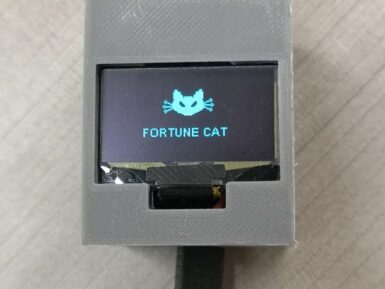
Multi-function Environmental Module - CCS811+BME280
Sold outBuild up a simple environmental monitor station with this multi-function environment sensor!
Overview
Build up a simple environmental monitor station with this multi-function environment sensor! Based on the combination of CCS811+BME280 chip, this module features high accuracy, I2C interface, and fast Measurement.
The BME280 can provide temperature and humidity compensation for CCS811 to improve the whole accuracy to a certain extent. It can be used to detect temperature, humidity, barometric pressure, altitude, TVOC, and eCO2.
CCS811 air quality sensor uses AMS's unique micro-hot plate technology. Compared with conventional gas sensors, it has lower power consumption, shorter preheating time, and smaller size. The internally integrated ADC and MCU allow it to collect and process data, and return via I2C.
BME280 is an environmental sensor that combines temperature sensor, humidity sensor, and barometer in one board. It has high precision, multiple functions, small size, etc. The sensor offers ±0.5℃ temperature error and ±2%RH humidity error.
It provides very stable performance within the detection temperature range. Besides, the offset temperature coefficient is ±1.5 Pa/K, equiv. to ±12.6 cm at 1 °C temperature change.
NOTE: The chip has stretched the clock in I2C. So, it may be not compatible with some controllers, such as Raspberry Pi.
Get Inspired

For well over one hundred years, people have been constructing machines that dispense fortunes to those who ask at the insertion of a coin and the push of a button. In modern days, this has taken the form of mobile apps that can be far more expansive, albeit with a lack of physical interaction. Seeing an opportunity to use an embedded speech recognition model in this kind of application, the Electronic Cats team built the aptly named Fortune Cat just in time for some Halloween fun. This small device, based on the Arduino Nano 33 BLE Sense, takes advantage of the onboard microphone to listen for words being spoken at the small cube. Performing the language processing is Cyberon’s Arduino Speech Recognition Engine, which was configured to listen for the wake phrase “Fortune Cat” and then later respond to “tell me my future” as its command phrase. After generating the model online, it was incorporated into the code via the DSpotter software development kit that lets the program check if either the wake or action phrase has been said and then act accordingly. In this case, asking Fortune Cat for your future will present one of 20 random phrases that get displayed on the OLED mounted to the top of the 3D-printed enclosure. To read more about how the Electronic Cats crew created and configured Fortune Cat, you can check out their write-up here on Hackster.io or watch their video below!







